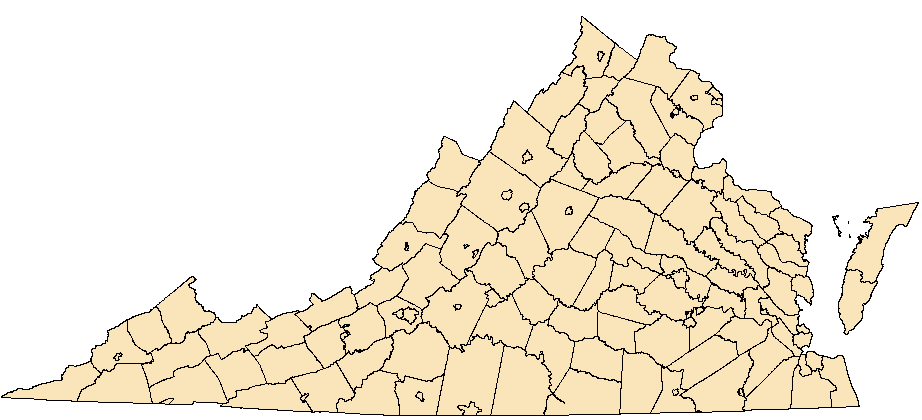Papaipema duplicatus Bird, 1908
Dark Stoneroot Borer Moth
NatureServe Global Rank: G2G4
Virginia State Rank: S2
VA DGIF Tier: IV
Federal Legal Status: None
Virginia Legal Status: None
Description: A rather large Papaipema species (45 mm). Its forewing is dark gray-brown sprinkled with small white dots. The hind wing is mostly a cream color with a faint brown line near the edge of the wing.
Similar species: The brown on the forewing of P. duplicatus resembles that of P. nebris, but when the two species are seen together, the difference in color is apparent. There are several other plain dark brown Papaipema species, but they lack the sprinkling of white spots.
North American Range: Historic range is New York City, northern New Jersey, eastern Pennsylvania, and northern Delaware to the mountains of Virginia and North Carolina, and along the Ohio River in Kentucky.
VA Observations by Locality: Bath | Bedford | Wise




Flight season and broods: Adults emerge mostly in the last half of September thru mid-October in Virginia.
Habitat and Food Plants: Host plant is Collinsonia canadensis (Stoneroot). This species can be found in rich deciduous woods where C. canadensis is abundant in the understory.
Behavior and Ecology: The larva starts in the lower stem. At its last stage, it enters the root, then it excavates a large cell in which it feeds and pupates.
Population trend and potential threats: Overgrazing of the host plant by deer and/or plant competition from other exotics that squeeze out C. canadansis. There is also the possibility that large exotic earthworms could be devouring Papaipema eggs.
Management practices: Deer population management might be recommended.
References: Moth Photographers Group at the Mississippi Entomological Museum at Mississippi State University. Web application at: http://mothphotographersgroup.msstate.edu/large_map.php?hodges=9499 Accessed: 18Apr2013
NatureServe. 2012. NatureServe Explorer: An online encyclopedia of life [web application]. Version 7.1. NatureServe, Arlington, Virginia. Available http://www.natureserve.org/explorer. (Accessed: September 15, 2012 ).
Schweitzer, Dale F., Mino, Marc C., Wagner, David L. September 2011. Rare, Declining, and Poorly Known Butterflies and Moths (Lepidoptera) of Forests and Woodlands in the Eastern United States. U.S. Department of Agriculture (USDA). FHTET-2011-01. Pp.358-359.
Virginia Department of Conservation and Recreation, Natural Heritage Program, 600 E. Main St., 24th Floor, Richmond, VA 23219
This atlas was compiled
by the VA Natural Heritage Program with funds provided by the VA Dept. of Game and Inland Fisheries through a state wildlife grant
from U.S. Fish and Wildlife Service
Questions/Comments? Check the contacts page |
Internet Privacy Policy Statement
Last Modified: Friday, 26 February 2021, 03:21:56 PM